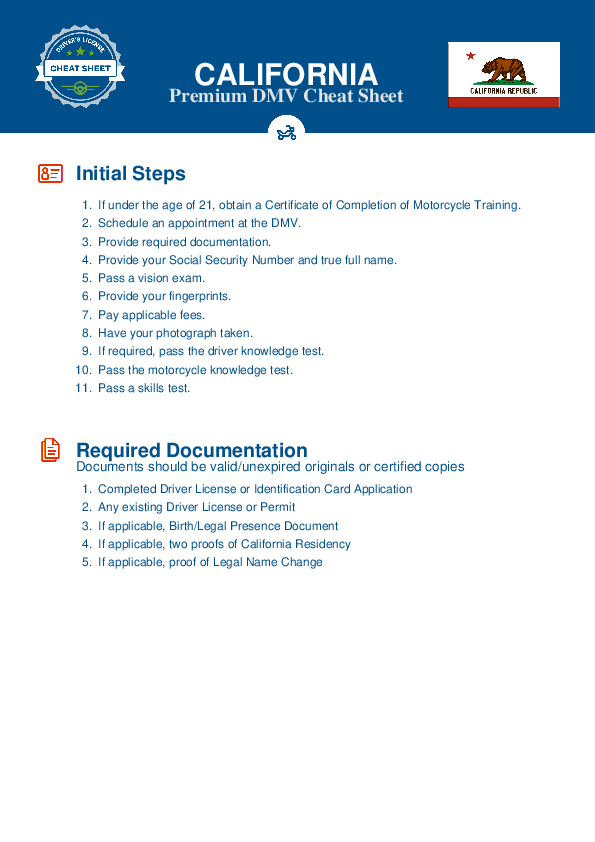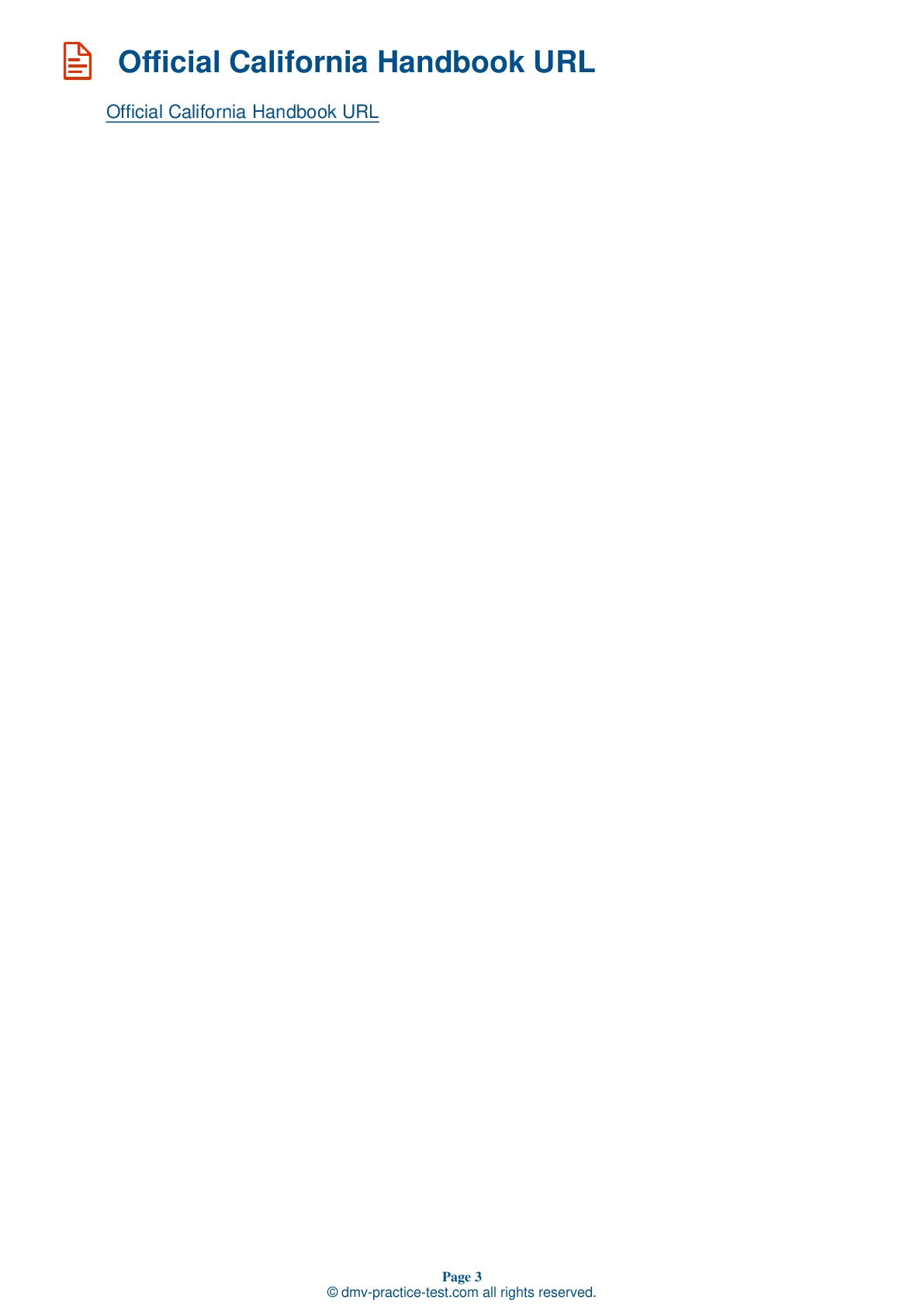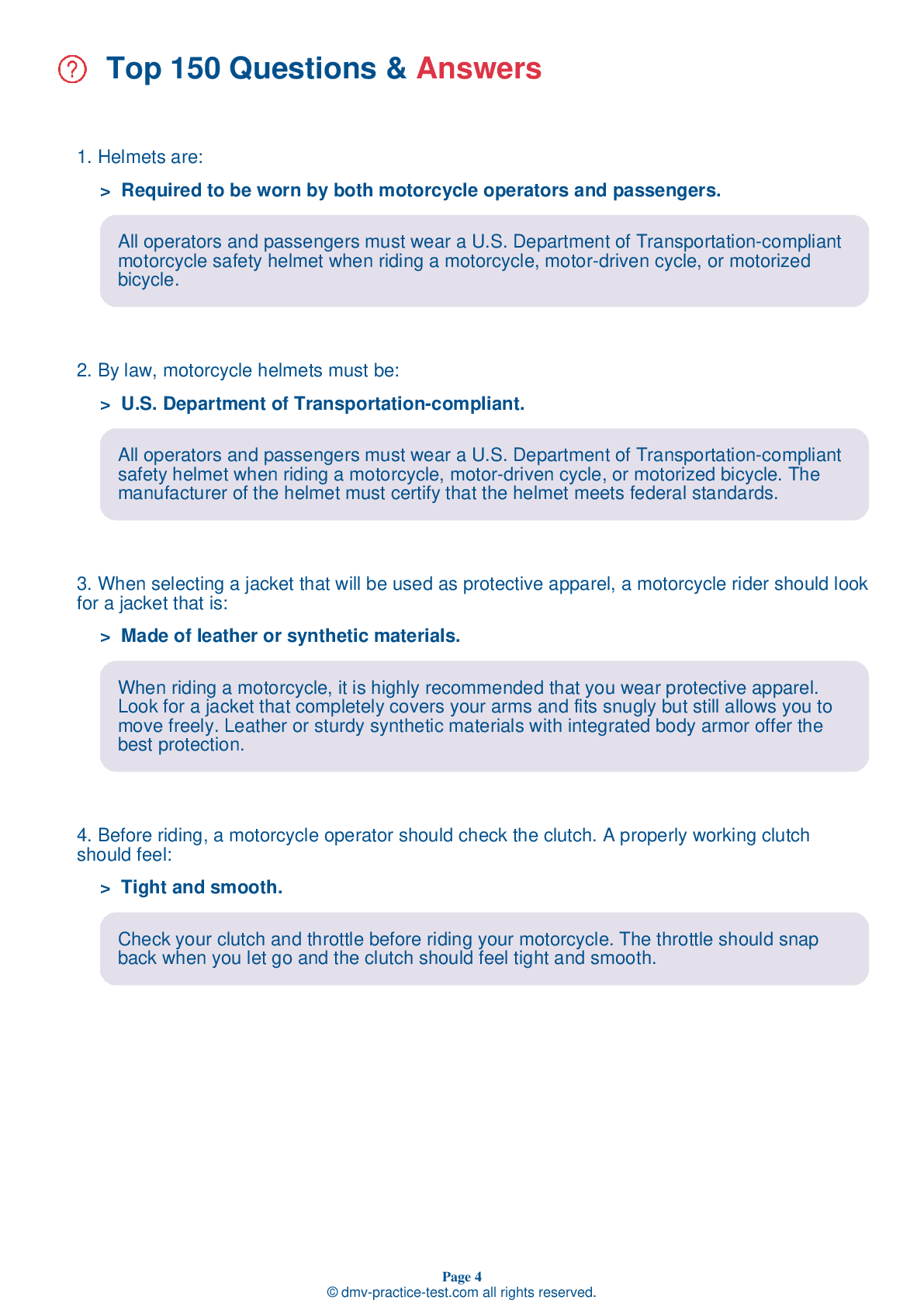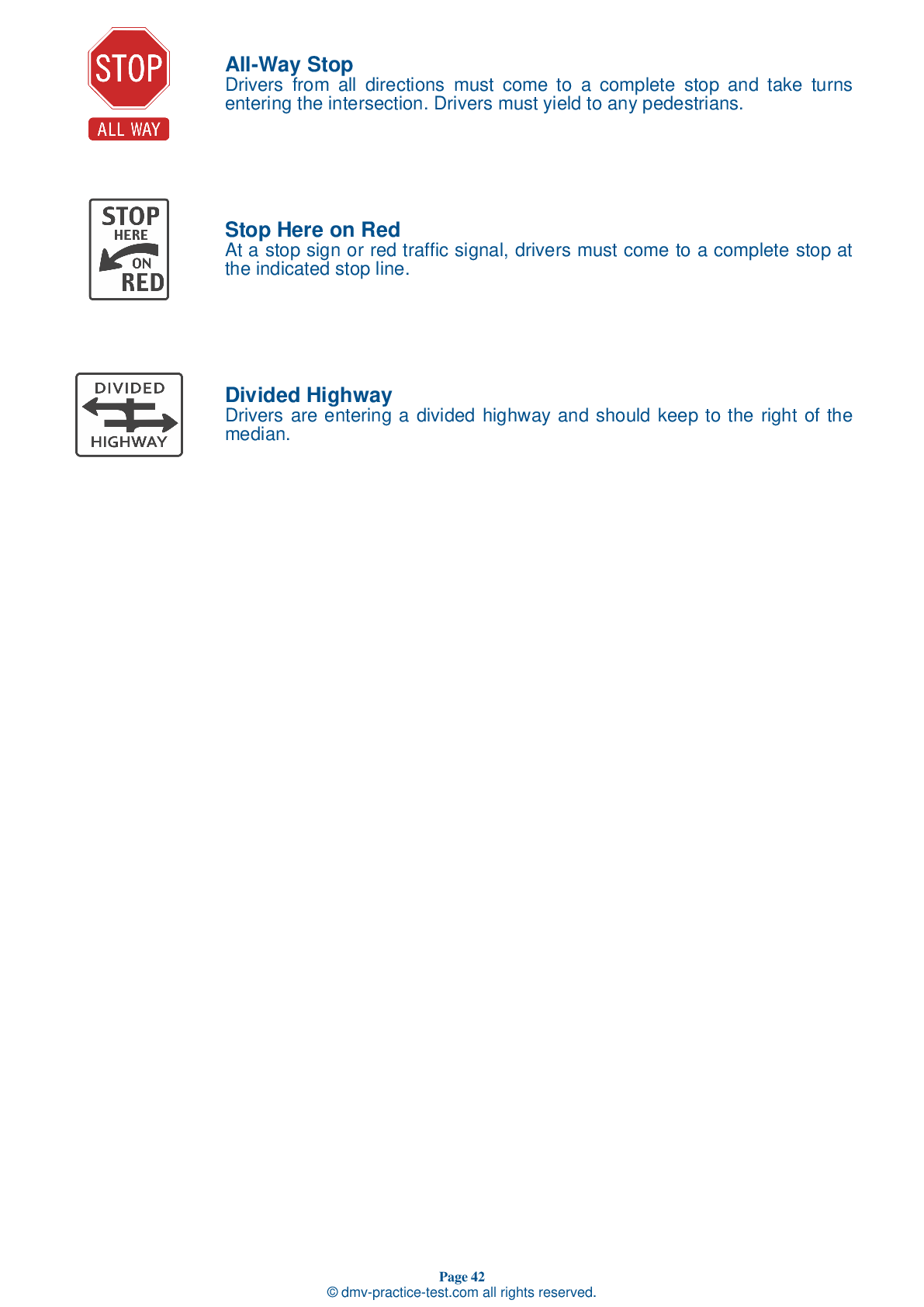Motorcycle Test | License CA 2025 | FREE Online Practice! #5
Take this FREE motorcycle test (license in CA 2025) to check your knowledge of the road rules. To improve your results, download a motorcycle handbook online, study theory, and practice for free on our website. Still worried about how to get a motorcycle license in California in 2025? Check our website for more sample tests, train as much as possible, and boost your grades!
1 . This white sign means:
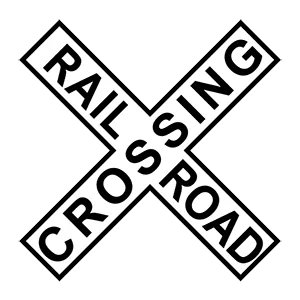
When approaching a railroad crossing, you must look, listen, slow down, and prepare to stop. Let any trains pass before you proceed.
2 . When approaching a blind intersection, riders should:
When approaching a blind intersection that is controlled by a stop line or stop sign, you must first stop where indicated. You may then edge forward and stop again just short of where the cross traffic lane meets your lane. From that position, lean your body forward and look around buildings, parked cars, or bushes to see if anything is approaching. Make sure your front wheel stays out of the crossroad while you are looking.
3 . Use your mirrors when stopping at an intersection:
It is important to consistently check vehicles approaching your motorcycle from behind to determine if drivers are paying attention to you and your movements. Use your mirrors when stopping at an intersection to make sure approaching drivers are responding appropriately to your actions.
4 . When carrying a passenger, a motorcycle takes:
The more weight being carried by a motorcycle, the more time the motorcycle takes to accelerate and decelerate. Your motorcycle will respond to your commands more slowly when carrying a passenger than it will when you are the only person on the bike.
5 . When riding a motorcycle, your lane position:
An appropriate lane position can increase your ability to see and be seen. Being properly positioned in a lane can also help you avoid blasts of wind coming off of surrounding vehicles.
6 . A motorized scooter can:
In California, motorized scooter can be used by anyone possessing any class of driver license.
7 . Motorcycles pulling trailers:
In California, motorcycles towing trailers are not allowed to travel in carpool lanes. They should usually remain in the right lane of a roadway, except to pass. When towing a trailer with a motorcycle, do not travel at speeds above 55 mph.
8 . When nearing a blind intersection, you should:
When approaching a blind intersection, move into the lane position that makes you the most visible to surrounding drivers.
See the exact questions that will be on the 2025 California DMV exam.
99.2% of people who use the cheat sheet pass the FIRST TIME
Jeneen was tired of paying $5/gallon. She got herself a scooter that required the motorcycle license. She studyed the motorcycle test cheat sheet and passed her test the next day!
Christopher tells us how he knew nothing prior to obtaining the motorcycle study guide, and he only got one question wrong because he clicked on the wrong answer by mistake.
